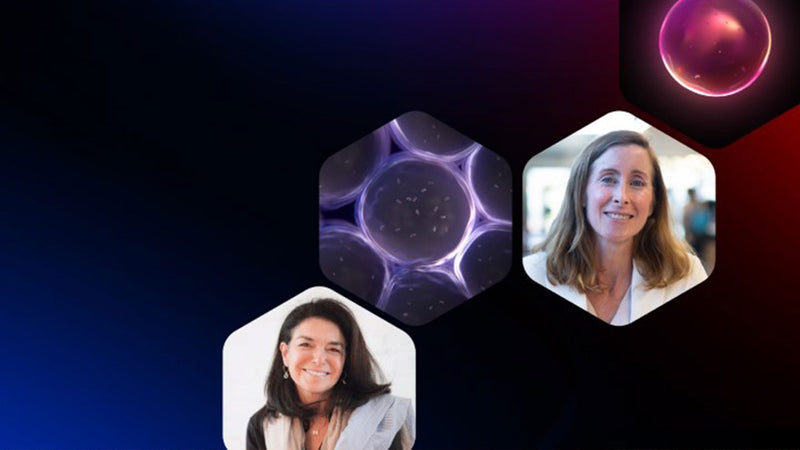NAD+ food sources: Foods that help boost NAD+
Read more
Calculated at checkout
$0.00 USD

As we age, our energy dips, recovery slows, and the resilience we had back in our younger years begins to fade. One of the culprits: Declining levels of NAD⁺ as we age. This decline is closely linked to the aging process, as lower NAD⁺ levels can impair the body's ability to repair DNA, reduce stress resistance, and negatively impact overall health.
NAD⁺ (nicotinamide adenine dinucleotide) is a molecule found in every living cell. It plays a vital role in fueling our energy, supporting cellular repair, and supporting healthy aging at the cellular level. NAD+ is essential for cell metabolism and participates in key metabolic pathways, including glycolysis, the citric acid cycle, and the electron transport chain, where it facilitates redox reactions and is crucial for ATP production during cellular respiration. It also helps regulate metabolic processes and maintain overall cellular function.
As we age, NAD+ levels naturally start to decline. Our bodies start to use more and more of it but replenish less. When NAD⁺ levels are low, everything from energy, recovery, and mental clarity can be impacted. NAD+ also plays a role in preventing mitochondrial dysfunction, which can impact cellular energy. That’s why scientists and wellness experts are turning to NAD⁺ as a key player in healthy aging.
NAD+ is involved in cellular repair and signaling through enzymes involved such as sirtuins and PARPs, which act on target proteins to regulate gene expression, DNA repair, and stress response. It also supports the cellular stress response, helping cells adapt to and recover from various stressors.
You’ve probably heard of NAD+ supplements with ingredients like NMN, NR, or our product, MitoQ NAD+ Dual Action. But did you know there are also everyday foods that can help support your body’s natural NAD⁺ production?
The below guide outlines so great dietary addition to help support NAD⁺ Production
While NAD itself isn’t found naturally in foods, certain foods contain precursors (like niacin, tryptophan, and more) that help your body convert the nutrients into NAD⁺. You can help increase your body’s NAD production by eating foods rich in these precursors.
Niacin (vitamin B3) is essential for converting food into energy and is a key building block your body uses to produce NAD⁺, supporting metabolism, brain function, and cellular repair.
Foods considered a good source of Niacin include:
Meat: Lamb Chop, Chicken, Beef, Pork
Fish: Salmon, Tuna, Anchovies
Vegetables: Green peas, Mushrooms, Avocados
Legumes: Lentils, Kidney Beans
Rice: Brown Rice

Foods high in niacin, such as those listed above, are especially effective at supporting cellular energy production. Additional sources of NAD+ precursors include cow milk and fermented foods, which can further support cellular health.
The body's ability to use niacin and its derivatives, such as nicotinic acid and nicotinic acid riboside, enables the production of NAD+ through various metabolic pathways. These compounds, collectively referred to as niacin equivalents, are present in a variety of foods and play a crucial role in maintaining NAD+ levels.
In addition to niacin and its derivatives, the amino acid tryptophan is another important dietary precursor for NAD+ biosynthesis.
When you think of tryptophan, many of us think of Thanksgiving --> turkey --> helping us fall asleep! And for food reasons, tryptophan is a precursor to serotonin, which the body then uses to make melatonin. Tryptophan is an essential amino acid that your body can’t produce on its own, making it vital to get from your diet. Beyond its reputation for promoting relaxation, tryptophan is a key precursor for NAD⁺ production, supporting cellular energy production and overall metabolic health. Through the kynurenine pathway, tryptophan is converted into NAD⁺, fueling various cellular processes that keep your body running smoothly.
Foods considered a good source of Tryptophan include:
Dairy & eggs: Milk, Yogurt, Cheddar Cheese,
Grains: Quinoa, Oats, Buckwheat, Wheat bread
Nuts & seeds: Walnuts, Cashews, Pistachios, Peanuts
Meats: Turkey, Beef, Chicken
Seafood: Lobster, Tuna, Salmon, Oysters
Fruits: Banana, Apple, Prunes

While most of the NR and NMN used in clinical research comes from supplements (due to higher concentrations), there are trace amounts of these compounds in certain whole foods. NR and NMN are utilized by the salvage pathway to help maintain NAD+ levels in the body. These compounds, along with other NAD+ precursors, enter metabolic pathways that ultimately support NAD+ biosynthesis.
Milk
Chicken
Fish
Mushrooms
Green Vegetables: broccoli, asparagus, peas
Some foods may also contain nicotinic acid riboside, another NAD+ precursor that can be salvaged into NAD+ via cellular pathways.
Supporting your body’s NAD⁺ levels goes beyond just what you eat, it’s about embracing a healthy lifestyle as a whole. A balanced diet rich in whole grains, fruits, vegetables, and healthy fats provides the nutrients your cells need for optimal energy production. Regular physical activity helps boost cellular energy production and maintain healthy NAD⁺ levels, while managing chronic stress and getting enough quality sleep are equally important for cellular energy and overall well-being. On the flip side, a sedentary lifestyle, chronic stress, and poor sleep habits can all contribute to declining NAD⁺ levels and impaired cellular function. To keep your NAD⁺ levels in check, aim to avoid excessive sun exposure, limit alcohol consumption, and steer clear of smoking. These healthy lifestyle choices work together to support your body’s energy production and help you feel your best every day.

Dr. Siobhan Mitchell, PhD, MitoQ's Chief Science Officer, recently joined Nathalie on The Longevity Podcast for an illuminating conversation about mitochondrial health and its central role in the aging process. Learn more here.
Sep 18, 2025 |3 mins to read

Antioxidant Science | Health & Nutrition | Products & Ingredients
Most NAD+ boosters only go halfway. Learn why MitoQ’s dual-action formula increases NAD+ and optimizes its use for real energy, focus, and healthy aging.
Sep 16, 2025 |4 mins to read